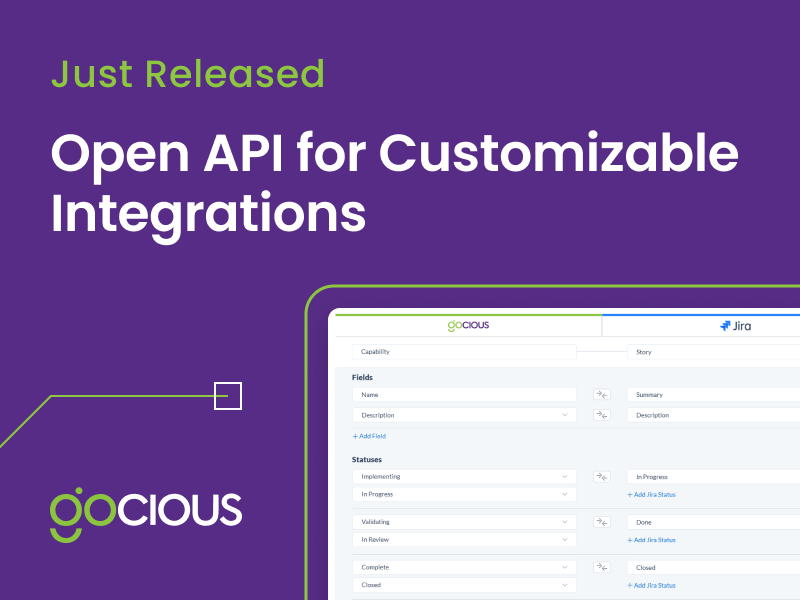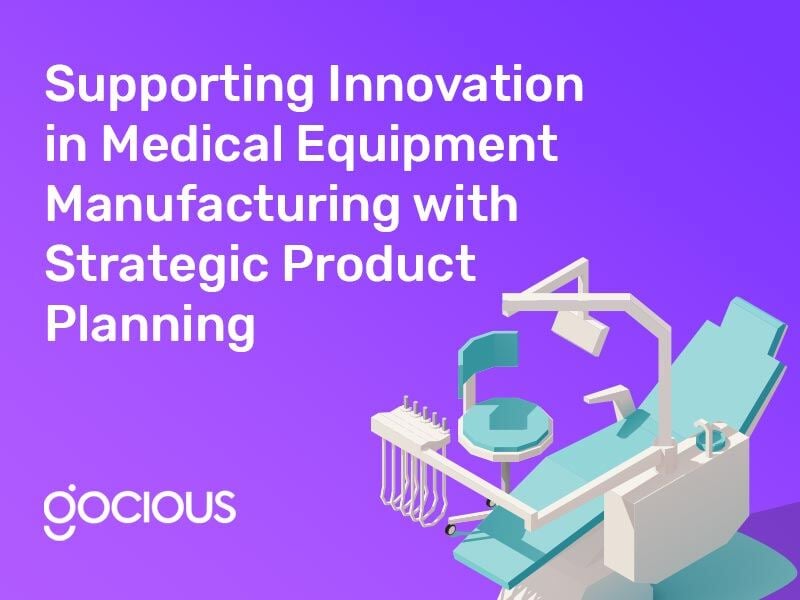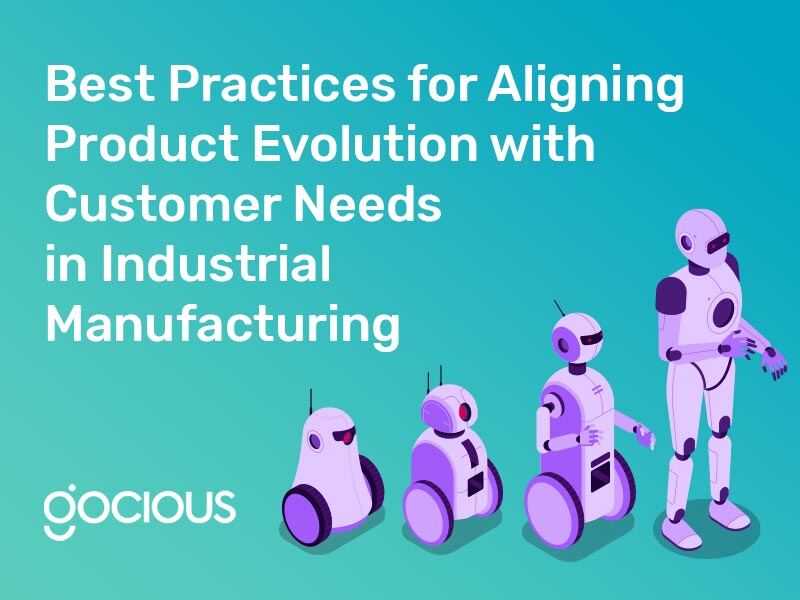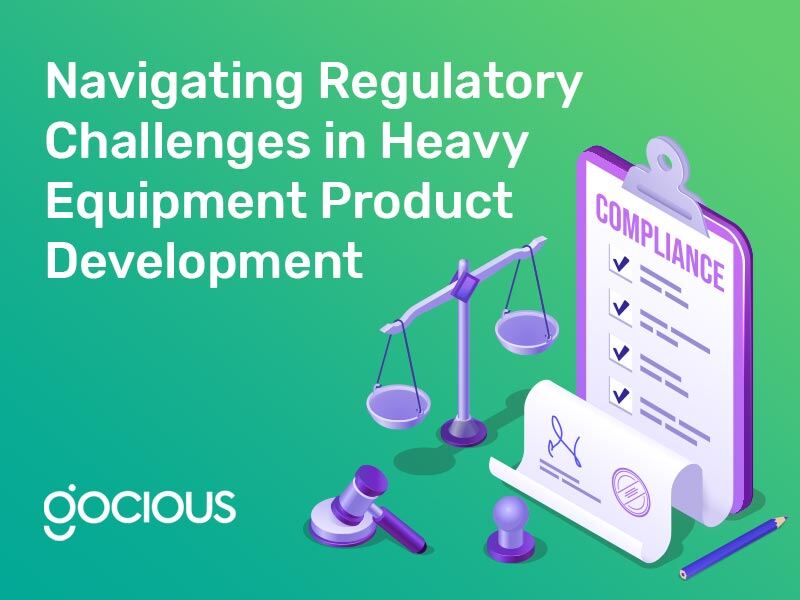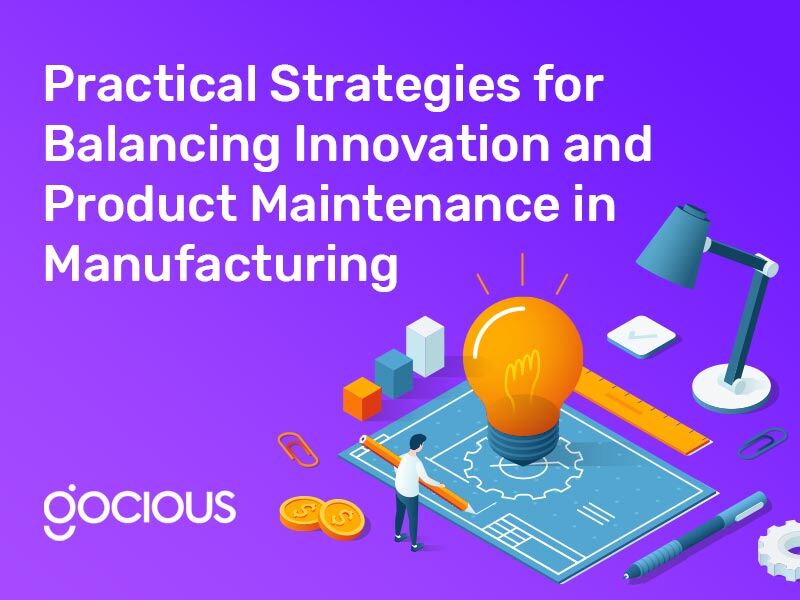
Subscribe to our blog
Ready to improve your roadmapping process?
Curious about how Gocious can help your manufacturing team transform its Product Lifecycle Management strategy? Let’s schedule a call to explore!
Product Management Articles
Maziar Adl

Recent Posts
Supporting Innovation in Medical Equipment Manufacturing with Strategic Product Planning
Innovation drives the medical equipment industry, pushing boundaries to create devices that improve patient outcomes, streamline healthcare delivery, and enhance quality of life. Yet, innovation in this sector needs to be more straightforward. Manufacturers must navigate a labyrinth of regulations, market demands, and technological advancements—all while ensuring safety and efficacy.
The Road to Digital Transformation in Manufacturing and How Gocious is Helping Lead the Way
The road to digital transformation in manufacturing is a journey toward greater efficiency, agility, and innovation. As manufacturers face mounting pressures to keep pace with rapid technological advancements and evolving market demands, adopting a strategic digital approach becomes essential. From product development to the manufacturing floor, companies need implementation product roadmaps as well as a suite of tools that support their digital goals.
Scaling Product Portfolios: Gocious Solutions for Automotive OEMs
The automotive industry is in the midst of a profound transformation. With rapid advancements in electric vehicles (EVs), autonomous driving, and smart technology, Original Equipment Manufacturers (OEMs) are managing increasingly complex product portfolios.
7 Essential Technologies Manufacturers Can Use in Digital Transformation
Digital transformation is no longer a lofty ideal in the manufacturing sector but a necessity. As industries rapidly evolve, manufacturers face ever-increasing pressure to adopt technologies that improve efficiency, reduce costs, and ensure adaptability. Digital transformation is the integration of advanced digital technologies to revolutionize how companies operate, from production to supply chain management.
Mastering Product Portfolio Management: 5 Crucial Benefits Gocious Delivers
Clarity, Control, Customer-Centric Success
Strategic product portfolio management provides the clarity and control required to adequately prioritize development initiatives and align innovation with market demands and long-term business goals. With clear portfolio oversight, companies can keep their teams aligned to strategic objectives, better address risks, and stay informed on market shifts.
Best Practices for Aligning Product Evolution with Customer Needs in Industrial Manufacturing
Many industries are adapting to evolving technology and innovation, especially in manufacturing. It's the same story with industrial manufacturing. Embracing new technologies and responding to shifting customer demands is essential to stay competitive in today's marketplace.
Product Forecasting: How to Build Forecasts that Shape the Future of Your Company
Forecasting your product line's future is not just an exercise in planning—it's critical to your company's survival. A well-crafted forecast helps you anticipate market demand, adapt to shifting customer preferences, and stay ahead of your competitors. Whether you're managing software products that evolve with new features and updates or physical products that require eventual sunsetting, product line forecasting empowers you to make data-driven decisions.
The Top Frustrations Manufacturers Face in Product Development
And How to Fix Them with Product Roadmap Software
Bridging the gap between innovation and tangible business results is crucial in manufacturing. This success requires a balance of user-friendly design, quality engineering, and effective sales strategies. Companies must balance these competing needs, all while ensuring that their products meet quality standards, market demands, and cost efficiency.
To Fund or Not to Fund: 5 Helpful Questions to Ask About a Struggling Product Line
In the lifecycle of any product portfolio, there comes a time when certain products underperform, leaving decision-makers with a difficult question: Should you continue to fund or phase them out? Underperforming product lines can drag down your portfolio's overall performance, siphon resources, and reduce profitability. Yet, there's also the potential that, with the right adjustments, these products could regain their footing. So, how do your product teams make this decision?
Overcoming Common Hurdles in Heavy Equipment Product Development
Manufacturing heavy equipment requires the careful coordination of many dynamic parts. Not only do the hardware and mechanical components need to integrate seamlessly with software programming, but both parts must line up in the development schedule. Assuming the product comes together without issues, it must also satisfy the customer, delivering value in both expected and unexpected ways.
Navigating Regulatory Challenges in Heavy Equipment Product Development
Product design and development are complex by nature. An intense amount of research, innovation, and testing is involved in designing new features that users find valuable. Add in the unique challenges presented by the associated regulating bodies of each industry, and the challenges extend beyond the technical complexity of the products themselves.
Practical Strategies for Balancing Innovation and Product Maintenance in Manufacturing
In product development, struggles often form between setting goals and following through on achieving those goals. Such is the conflict between innovation—creating new features and products—and maintenance—keeping existing products running smoothly.

